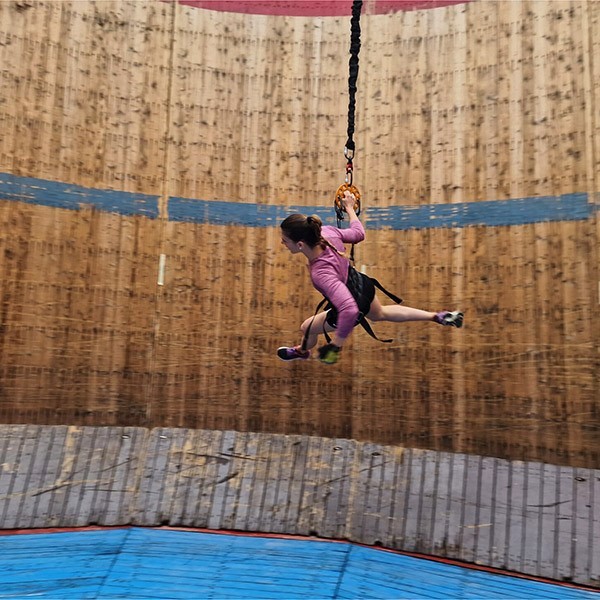Hello Nature readers, would you like to get this Briefing in your inbox free every day? Sign up here.
A population of neurons in the brain stem, the stalk-like structure that connects the bulk of the brain to the spinal cord, acts as the master dial for the immune system.Credit: Voisin/Phanie/Science Photo Library
Scientists have identified cells in the brainstem of mice that sense immune cues from the periphery of the body and act as master regulators of the body’s inflammatory response. The study “shows that there is a whole layer of biology that we haven’t even anticipated”, says immunologist Ruslan Medzhitov. Experiments revealed two groups of neurons in the vagal nerve that respond to pro-inflammatory and anti-inflammatory immune signals respectively. These neurons send messages to the brain, allowing it to monitor, and possibly modify, the immune response as it unfolds. How the brain sends signals back to the immune system remains unclear.
Dozens of cases of identical phrases found in peer-review reports across 19 journals could be just “the tip of the iceberg” of plagiarism, say the researchers. In the worst example, a single quote appeared in 50 review reports. The amount of duplication increased every year between 2021 and 2023, though it’s unclear whether this is because the number of open-access peer-review reports increased during this time or whether it indicates a growing problem. Scientific publishers say they are taking action to prevent reviewer misconduct.
Reference: Scientometrics paper
Running around a giant wooden barrel — dubbed the ‘wall of death’ by the motorbike stunt performers who use it for fairground acts — could keep people fit on the Moon. Under Earth’s gravity, it’s impossible to run around the cylinder without falling down. But in tests that simulated the much lower lunar gravity by suspending participants from a bungee cord, people could run around the horizontal walls. A few laps a day should be enough to stave off bone and muscle wasting, the researchers suggest.
Reference: Royal Society Open Science paper

Lunar explorers could be housed in circular habitats whose walls double as vertical running track. (Alberto E. Minetti et al./R. Soc. Open Sci. (CC BY 4.0))
In the latest of a series of public hearings convened by US politicians to spar over the origins of COVID-19, infectious disease specialist Peter Daszak was interrogated over his ties to China and inconsistencies in testimonies and documents. Daszak has been a lightning rod in the COVID-19 origins debate: he heads a non-profit organisation that studied bat coronaviruses with a virology lab located in Wuhan, China, where the first COVID-19 cases were reported. The hearing’s intense scrutiny could disincentivize other US scientists from proposing collaborations with colleagues in China and other countries, a process that is considered essential for pandemic prevention, says health-law specialist Lawrence Gostin.
Features & opinion
In a Nature Podcast special, three researchers cut through the misinformation around sex and gender in search of a positive future for this long-neglected area of research. “There’s almost an inherent tension between the drive to simplification that gives experimental methods their power and the recognition of the complexity of sex and gender,” says biomedical researcher Stacy Ritz. It’s important not to abandon the comparison of males and females in biomedical studies, but researchers need to find the appropriate level of nuance, adds neuroscientist Peg McCarthy. “What I would really love is for the studies to at least have this reporting of how they actually categorized the individuals or the animals,” says jurist and bioethicist Florence Ashley.
Nature Podcast | 59 min listen
Read more in Nature’s special collection on sex and gender in science
Physical activity is a fundamentally stressful process that our body has learnt to benefit from. “With each bout of exercise, you provoke an anti-inflammatory response,” says exercise researcher Bente Klarlund Pedersen. Scientists are starting to untangle the elaborate ‘choreography’ of cellular processes that exercise triggers. This could eventually help clinicians to develop tailored exercise prescriptions for people with chronic diseases — or even develop therapeutics that mimic some of the health-boosting effects. “That’s not to say that we will have exercise in a pill, but there are certain aspects of exercise that could be druggable,” says exercise physiologist Bret Goodpaster.
Barbie and other plastic toys don’t age well. The material they are made from deteriorates over time, leading to afflictions such as ‘sticky leg syndrome’: tacky deposits or white blooms of exuded plasticisers — additives that make plastics softer. “One school of thought is that you just leave it and you keep [the doll] in an enclosed area so that dust and dirt doesn’t settle on [it],” says conservation scientist Brenda Keneghan. “The other school of thought is that you do remove the plasticiser [marks], with the knowledge that more is going to come over the years.”
Today, I’m excited to discover why warm alcoholic drinks taste more ‘boozy’: as temperature increases, water and ethanol molecules shift from compact, pyramid-like to chain-like structures.
Help to keep this newsletter fresh and cool by sending your feedback to briefing@nature.com.
Thanks for reading,
Katrina Krämer, associate editor, Nature Briefing
With contributions by Flora Graham, Smriti Mallapaty and Sarah Tomlin
Want more? Sign up to our other free Nature Briefing newsletters:
• Nature Briefing: Microbiology — the most abundant living entities on our planet — microorganisms — and the role they play in health, the environment and food systems.
• Nature Briefing: Anthropocene — climate change, biodiversity, sustainability and geoengineering
• Nature Briefing: AI & Robotics — 100% written by humans, of course
• Nature Briefing: Cancer — a weekly newsletter written with cancer researchers in mind
• Nature Briefing: Translational Research — covers biotechnology, drug discovery and pharma

